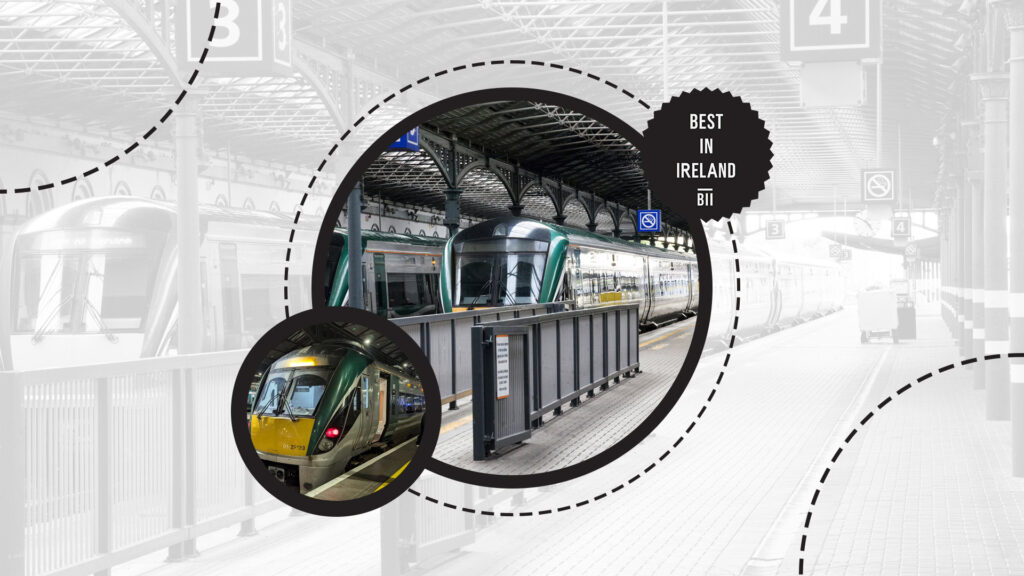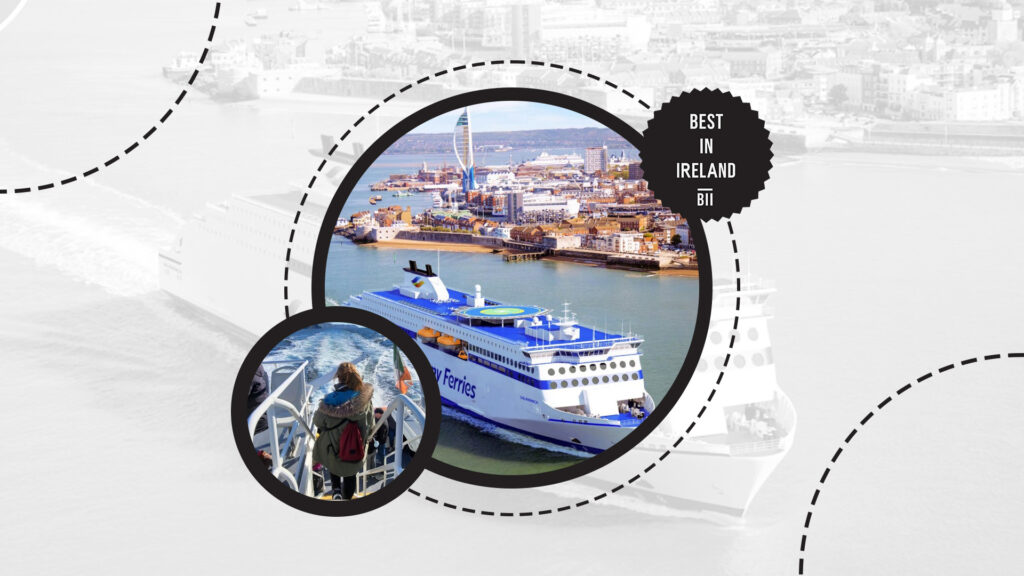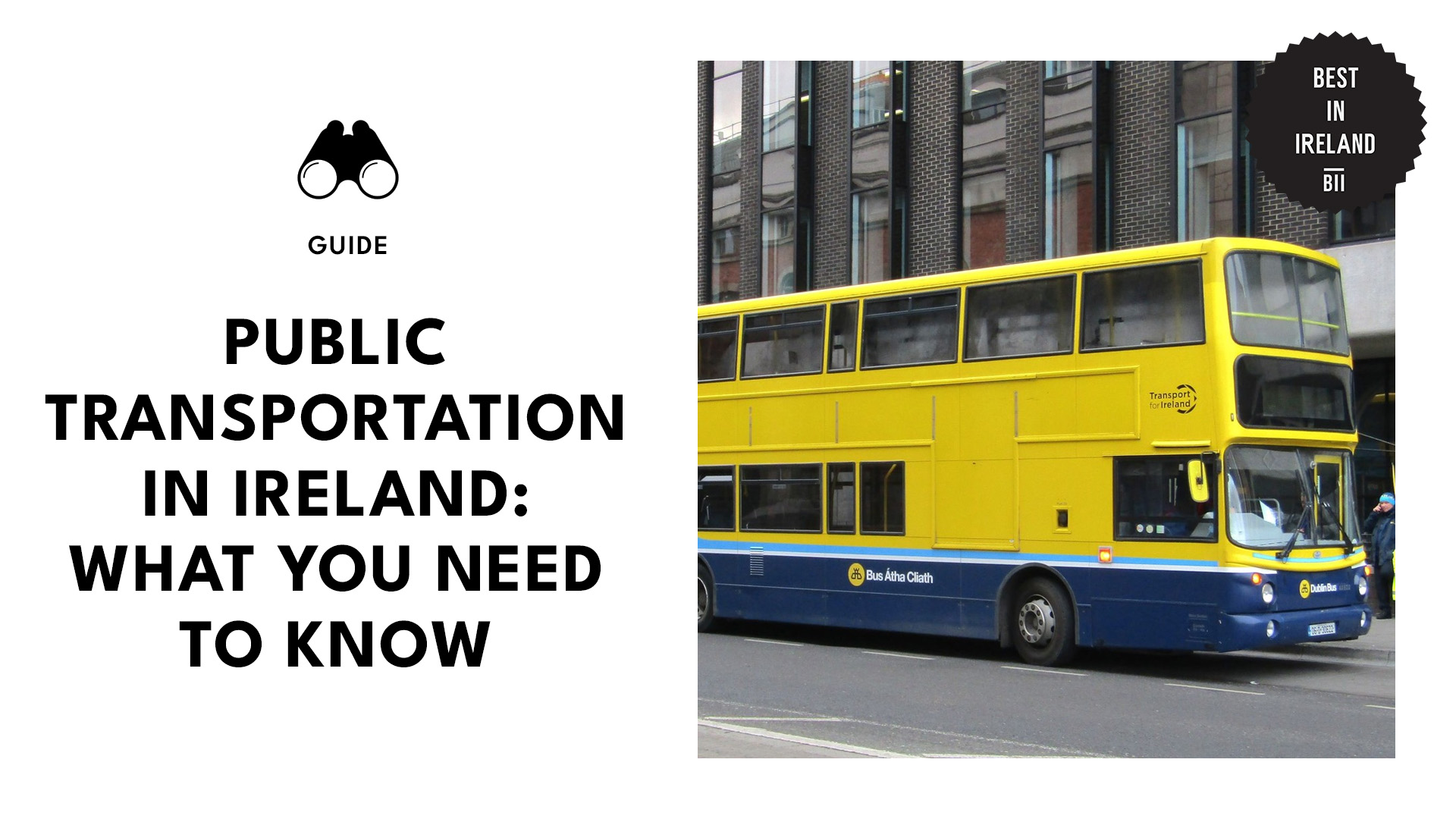We navigated around Ireland using public transportation like a pro! Here’s how we did it!
Moving to Ireland as a young adult felt like stepping into a whole new world, filled with excitement and a bit of anxiety.
One of my biggest challenges was navigating the transportation system—between buses, trains, and trams. It was overwhelming initially, and I often found myself lost or late.
But after years of navigating this beautiful country, I’ve gathered all the insider tips and tricks that turned those initial struggles into smooth travels. Join me as I share everything you need about getting around Ireland like a pro.
1. Dublin Bus

Getting around Dublin can be quite an adventure, and a big part of that is thanks to Dublin Bus. This service has been around since 1987. It’s all under the Córas Iompair Éireann (CIÉ) umbrella, but most people know it as Dublin Bus.
The bus network is extensive, reaching not just Central Dublin but the suburbs as well. Whether you need to catch a regular city bus, hop on an Xpresso for a quicker journey, or rely on a night service like Nitelink after a fun night out, there’s usually a bus ready.
And if you’re heading to a major railway station, they’ve connections; if you pay your €2 fare as an adult, you can transfer on Dublin Bus, the Luas, DART, and even commuter rail services—all within a 90-minute window.
For shorter trips, you can grab a Leap Card and pay just €1.30 for rides up to about 3 kilometers. This system caters to everyone—commuters hustling to work, students headed to class, and tourists exploring the city.
Pro tip:
Utilize the Leap Card, which offers significant savings—up to 30% compared to cash fares—and simplifies the payment process.
2. Bus Eireann

Established in 1987 as part of Córas Iompair Éireann, Bus Éireann is a state-owned bus and coach operator that connects people across the country, except for Dublin, where Dublin Bus takes care of things.
What I love about Bus Éireann is how it focuses on linking rural communities with urban centers. This is essential for so many people, especially those living in smaller towns who need to travel to the city for work or other essentials.
They operate around 229 Public Service Obligation (PSO) routes and 14 expressway routes for longer journeys. And don’t forget about the 8,940 school transport routes—imagine all those students safely getting to school daily!
Their Expressway division is pretty handy, too. It connects major cities and even airports, which is a lifesaver if you’re a tourist or just need to hop between cities. They even have an easy fare system—you can use cash or a TFI Leap Card.
Pro tip:
Plan your journey using the TFI Journey Planner app or website to check timetables and real-time updates before departure. This ensures you have accurate information regarding schedules and any potential delays.
3. Irish Rail

Iarnród Éireann, or Irish Rail as most people call it, has been the heart of the rail system since its start in 1987. They’ve done a fantastic job connecting major cities and towns, making travel seamless for locals and tourists alike.
One of the coolest things about the rail network is the scenic routes. Imagine sitting in a train and suddenly being surrounded by rolling hills, stunning coastlines, and charming little towns.
Iarnród Éireann has also really committed to enhancing the travel experience. They’ve rolled out modern trains and better facilities. Now, the network stretches around 2,733 kilometers (or about 1,698 miles), which is quite impressive!
They offer various services, such as InterCity, which connects cities like Dublin, Cork, and Galway. If you’re in Dublin, you’ve got to check out the DART service. It’s great for hopping along the beautiful East Coast from Malahide to Greystone.
Pro tip:
Plan your journey ahead of time by checking schedules on the Iarnród Éireann website or app. This ensures you are aware of train times and any potential delays.
4. DART

DART, which stands for Dublin Area Rapid Transit, started in 1984. Now, it’s this fantastic suburban rail service that connects the heart of the city with some lovely coastal towns and suburbs.
DART’s network stretches from places like Howth and Malahide in the north down to Bray and Greystones in the south. And here’s the cool part – the fare system is distance-based, so you only pay for the zones you travel through.
You can grab a ticket at the station, or if you want to save a few bucks and time, you should use the Leap Card. It’s a neat, contactless payment option that offers discounted fares and makes hopping on and off a breeze.
Trains run frequently throughout the day, so you don’t have to stress about scheduling your life around a train timetable too much. It allows you to navigate the city and surrounding areas without needing a car.
Pro tip:
Using the Leap Card can save money on fares and streamline the boarding process.
5. Luas Light Rail Service

Luas, the city’s light rail tram system, opened in 2004 and has been a game-changer for getting around. It has two main lines: the Green Line and the Red Line. The trams run frequently—like every 3 to 4 minutes during peak times.
They stretch across a good chunk of Dublin, connecting all sorts of neighborhoods and spots. Fun fact: “Luas” means “speed” in Irish, which fits because it’s all about getting you where you need to go quickly and reliably.
If you hop on the Green Line, you can start at Brides Glen in the south and take it up to Broombridge in the north. Or if you’re near the Red Line, it begins in Saggart and Tallaght and takes you right into the Dublin Docklands at The Point.
This TFI 90-Minute Fare lets you travel across different services for 90 minutes. It’s just €2 for adults; if you’re a young adult or student, you pay €1. Kids have it even better, at just 65 cents, while those under five travel free with an adult.
Pro tip:
Ensure you Touch On validators before boarding and Touch Off when exiting to avoid fines. This process is crucial when using a Leap Card or purchasing a ticket; failing to do so may result in receiving a €100 fare notice if checked by inspectors.
6. Ferries

Ferries have been part of the Irish landscape for centuries, and there’s just a charm to hopping on a ferry that you don’t get with other forms of transport. It’s not just about getting from point A to B; it’s an adventure.
Whether you’re headed for the Aran Islands or the breathtaking Skellig Michael, the ferry ride brings a sense of excitement and connection to the journey. Plus, it’s a perfect way to soak Ireland’s beauty from a unique angle.
The ferry network is impressive, too. You’ve got key routes linking major ports like Dublin, Rosslare, Cork, and Belfast to places in the UK, France, and even Spain. Think about it—just a short ferry ride, and you can explore a different country!
Now, if you’re someone who likes to travel with a vehicle, ferries are super accommodating. You can bring your car, bike, or even a camper van—so you’re all set to explore once you hit land.
Pro tip:
Just a heads up, though most ferry services are seasonal, so if you have your heart set on visiting those smaller islands, it’s best to plan your trip between April and September.
7. Taxis

Taxis are your Small Public Service Vehicles or SPSVs. I love that they can even use bus lanes, which helps reduce time, especially during those busy hours.
The National Transport Authority (NTA) monitors the situation closely, ensuring that all drivers are properly licensed and the cars are safe. Since September 2022, there’s been a big push for card payments.
Taxis buzz around cities like Dublin, Cork, Galway, and Limerick. The fare system is straightforward, with a metered price. They start at about €3.80 during the day and a bit more at night, like €4.20.
One of the best parts about taxis is how versatile they are. They cater to a variety of people—whether you’re a tourist trying to find the best spots, someone with mobility challenges needing a door-to-door lift, or just out late and needing a safe ride home.
Pro tip:
Always confirm the estimated fare before starting your journey to avoid surprises. Upon completing your trip, ensure your driver provides a printed receipt; this serves as proof of payment and can be useful for any inquiries on your fare.

